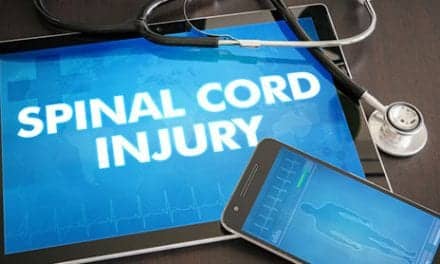HFAP’s recently released 2019 Primary Stroke Center Benchmarking Report finds that HFAP-certified primary stroke centers continue to meet or exceed benchmarks identified for the majority of performance measures set by the American Heart Association.
The benchmarking report aims to identify target goals and compares results achieved by individual centers. HFAP-certified primary stroke centers submitted their performance results for the benchmarking report to have their data placed in relevant context across a range of peer programs, according to HFAP in a media release.
“This benchmarking report is designed to help organizations to compare their performance to that of their peers and identify areas where improvements can be made,” says Marci Ramahi, Director, Accreditation and Certification Operations.
“We encourage stroke coordinators and organizational leaders to share this report and analysis with staff, board members and administrative teams to illustrate how patient care is reflected in benchmarking metrics.”
The HFAP benchmarking report analyzed data from January to December 2018 to determine whether benchmarks identified for each performance measure were achieved. The data represent patients 18 years and older who arrived in the emergency department or who experienced onset of symptoms while in the hospital for another diagnosis.
Overall, the release explains, pparticipating HFAP-certified stroke centers met or exceeded AHA benchmarks in key areas, including:
VTE Prophylaxis
95% of stroke centers exceeded the benchmark to assess patients with a diagnosis of acute ischemic stroke for risk of VTE and provide prophylaxis when indicated. Benchmark at 85%.
Discharge on Antithrombotic Therapy
100% of stroke teams exceeded the benchmark for prescribing antithrombotic therapy at hospital discharge to ischemic stroke patients. Benchmark at 85%.
Anticoagulation Therapy for AF/Flutter
95% of stroke teams exceeded the benchmark for prescribing anticoagulation therapy at hospital discharge to ischemic stroke patients with a clinical diagnosis of atrial fibrillation/flutter. Benchmark at 85%.
Thrombolytic Therapy 4.5 Hours
100% of stroke teams exceeded the benchmark for initiation of IV tPA within 4.5 hours of time since last known well for ischemic stroke patients who arrive at the hospital within two hours of last known well. Benchmark at 85%.
Antithrombotic Therapy (End of Day 2)
100% of stroke teams exceeded the benchmark to administer antithrombotic therapy to ischemic stroke patients by the end of hospital day two. Benchmark at 85%.
Discharged on Statin Medication
100% of stroke teams exceeded the benchmark to prescribe statin medication at discharge to ischemic stroke patients with LDL greater than or equal to 100 mg/dL, or LDL not measured, or who were on lipid-lowering medication prior to hospital arrival. Benchmark at 85%.
Stroke Education
95% of stroke teams exceeded the goal to provide educational materials during the hospital stay to ischemic or hemorrhagic stroke patients or their caregivers. Benchmark at 85%.
Dysphagia Screening
100% of stroke teams exceeded the goal to conduct dysphagia screening on eligible patients prior to administering anything by mouth. Benchmark at 85%.
“The goal of this report is to support our stroke center partners and other stroke programs in creating data-driven quality improvement programs that nurture a culture of safety and boost clinical outcomes,” Ramahi adds. “Through continuing education and collaboration with our certified organizations, we champion hospitals advancing the welfare of their communities and innovating the delivery of stroke care.”
[Source: HFAP]





